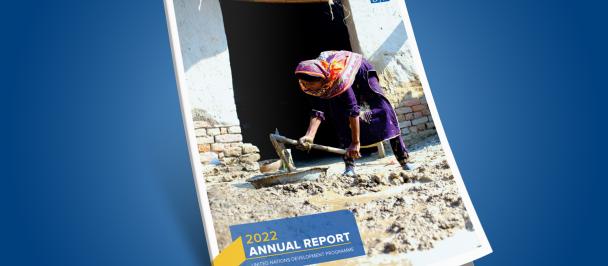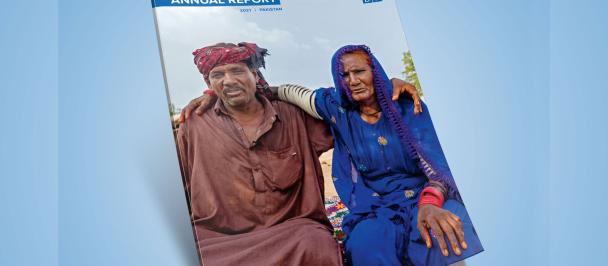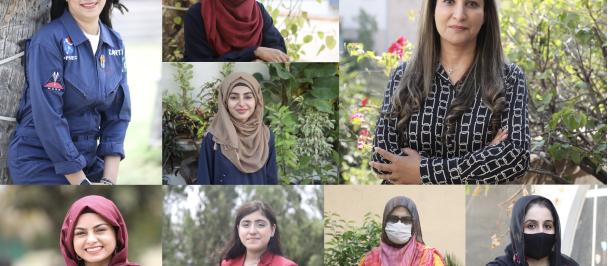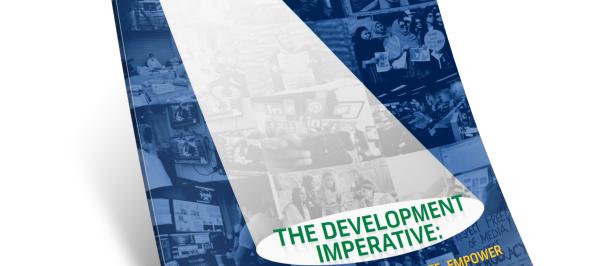© UNDP Pakistan/Shuja Hakim
Green economy promotes resource efficiency through lower carbon emission and social inclusivity. In a green economy, employment and income are driven by public and private investment into economic activities, infrastructure and assets that allow reduced carbon emissions and pollution, enhanced energy and resource efficiency, and prevention of the loss of biodiversity and ecosystem services.[1]
Environmental sustainability and green economy are integral components of Sustainable Development Goal (SDGs); as they effect and impact various dimensions of development interventions; ranging from; 1) improving basic infrastructure, 2) provision of clean and safe water and sanitation; 3) enhancing solid waste management facilities; 4) fostering convenient and accessible transport system, 5) providing affordable and clean sources of energy and 6) harnessing natural habitat and biodiversity. The integration of these dimensions is essential towards economic growth and they consequently contribute towards bridging inequalities and reducing poverty gaps. United Nations Environment Program (UNEP)2 serves as catalyst for fostering concept of green economy and driving its interlinkages with Sustainable Development Goals (SDGs) . Other similar initiatives include UN Department of Economic and Social Affairs (UNDESA), the United Nations Conference on Trade and Development (UNCTAD), the International Labour Organization (ILO), the World Bank, the Organisation for Economic Cooperation and Development (OECD), the Global Green Growth Institute (GGGI), the Partnership for Action on Green Economy (PAGE), the Green Growth Knowledge Platform (GGKP). These organizations amongst others have been working in demystifying the concept of green economy and its impact on various dimensions of development interventions.
Pakistan has made steady progress towards environmental sustainability, as linked with SDG 15: Life on Land and SDG 13: Climate Action. The initiative undertaken include planting 10 billion trees in five years (2018-2023) which is in addition to the successful 1 Billion trees Tsunami Afforestation Project in Khyber Pakhtunkhawa in 2014-2019. Other measures also include more reliance on renewable energy projects, Clean Green Pakistan, Protected Areas Initiative, etc.
According to the recently released UN Sustainable Development report 2020, Pakistan is well on track to achieve its long term goals to tackle Climate Change.
Moreover, according to the Sindh Bureau of Statistics, 2018, Sindh province’s total forest cover is 7.34% . However, despite this, Pakistan is still a forest poor country with 5.01% of its total area under forest cover (FAO, 2019), compared to the UN recommended level of 12% cover.
Apart from low forest cover, pronounced effects of climate change has led to frequent natural disasters in country. Since 2010, Pakistan has been witnessing flash flooding due to melting of glaciers in northern areas and torrential rains in monsoon season. In Sindh alone, 24,096,173 people have been affected by floods between 1988-2013 (Monsoon Contingency Report 2017, PDMA Sindh). This year Pakistan has experienced record torrential rains, especially in Karachi which led to urban flooding. Based on damage assessment by Government of Sindh, all districts of the city were declared as ‘calamity affected’ According to MET office, the recent Karachi rains have broken an 89 years old record for the city since 1931.
Meanwhile, UNDP’s Multi-Poverty Index (MPI) report 2020, pp.41 states that 38.3% of people in Pakistan are multi-dimensionally poor while the figure for Sindh is 50.54%. These statistics highlight existing vulnerabilities of the people in Pakistan. If mitigation and coping mechanisms are not strengthened, these existing vulnerabilities are at a further risk with the occurrence of natural disasters and loss of biodiversity.
According to findings of Climate Inaction study (2018) prepared through support of UNDP, Pakistan and SDGs Support Unit, Sindh, the cost of climate inaction in Sindh would cost 20% of the provincial GDP per year ($18.3 billion every year). This estimate is based on the Stern model (2006), applied by Environmental Scientist globally, to estimate the cost of in-actions. The cost of action, however, would be 2.5% ($2.29 billion) of GDP every year. However, this percentage will increase if mitigation measures are not adopted with wide range effects on agriculture, services and industrial sectors.
In urban areas; the climate induced implications have further risk implications particularly in expanding cities like Karachi. SDG 11: Sustainable Cities highlights the need to develop robust urban plans with green spaces and accessible transportation facilities. It also emphasizes on provision of basic housing facilities for the city’s population along with proper waste management facilities. In Pakistan 45.5% of the total urban population is living in Slums (World Bank, 2015). In Sindh alone, 25.71% of urban population is living in one-room houses (MICS 2014-15). To cope with challenges of migrating and expanding population in urban areas, there is an urgent need to structure planning around environmental and resource efficacy.
Author:
Ahmed Hasan
Ahmed Hasan holds master’s in Development Studies from Institute of Development Studies (IDS), University of Sussex, UK. He has over a decade’s experience in monitoring and evaluation, policy analysis and disaster risk reduction. Currently working as the Monitoring and Evaluation Officer at SDGs Support Unit Sindh, Ahmed contributes for SDGs data gap analysis, development of SDGs baseline for Sindh as well as the Provincial SDGs framework for Sindh.
1. https://www.unenvironment.org/regions/asia-and-pacific/regional-initiatives/supporting-resource-efficiency/green-economy
2. https://www.unenvironment.org/explore-topics/green-economy

 Locations
Locations





